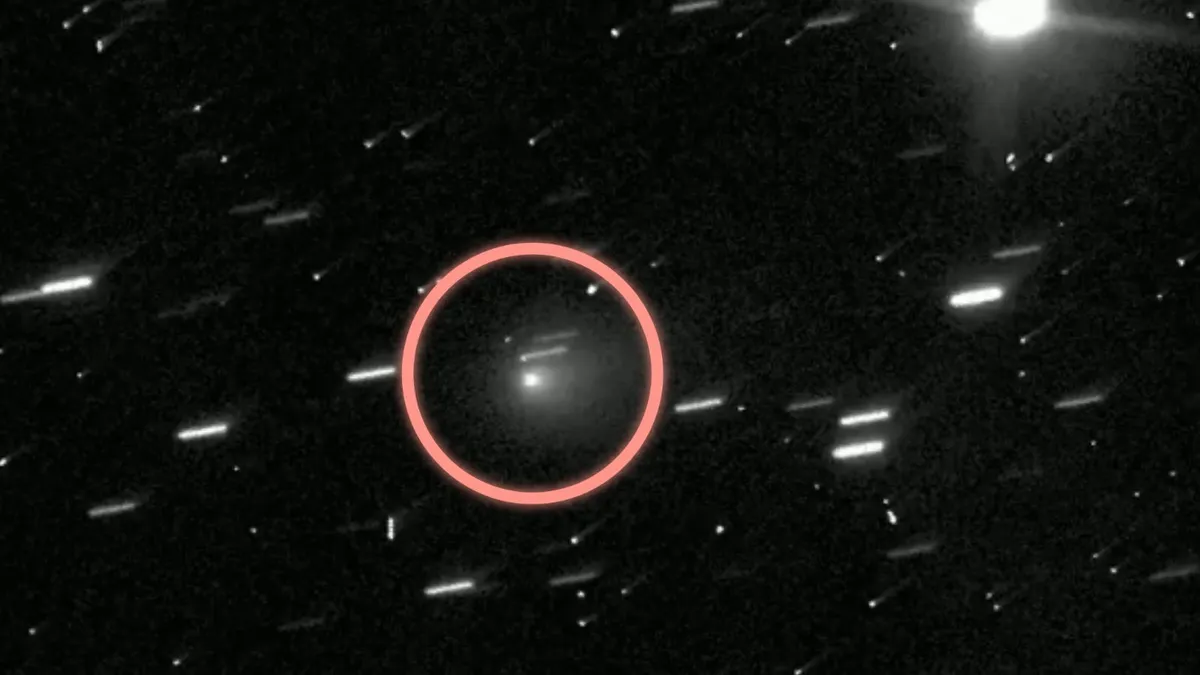
The Hubble Space Telescope has made a groundbreaking discovery by capturing its first images of comet 3I/ATLAS. This remarkable comet is only the third known object that humanity has observed entering our solar system from beyond its confines. Before 3I/ATLAS, the only interstellar visitors documented were 1I/'Oumuamua, seen in 2017, and 2I/Borisov, detected in 2019. Both of these cosmic wanderers have since exited the solar system, leaving behind a tantalizing hint that other interstellar bodies may lurk undetected in our cosmic neighborhood.
According to a report by Space.com on July 11, 2025, recent research indicates that comet 3I/ATLAS may be even more fascinating than previously thought. Its trajectory suggests that it originates from a region of the Milky Way that is significantly older than our own solar system, which is approximately 4.6 billion years old. With an estimated age of around 7 billion years, 3I/ATLAS stands to be the oldest comet that has ever been observed by humanity.
Astrophysics undergraduate student astrafoxen shared the Hubble images of 3I/ATLAS with their followers on Bluesky, stating, "Hubble Space Telescope images of interstellar comet 3I/ATLAS are out! These were taken 5 hours ago. Plenty of cosmic rays peppering the images, but the comet's coma looks very nice and puffy." Their post highlights the excitement surrounding the recent discovery and the ongoing research efforts to understand this interstellar traveler.
One study focusing on 3I/ATLAS is already available as a preprint. This research describes the optical and near-infrared spectroscopy conducted on the comet, revealing that it is an active interstellar body rich in water ice. Interestingly, its dust composition aligns more closely with that of D-type asteroids rather than ultrared trans-Neptunian objects. D-type asteroids are known for their rich organic molecules and carbon, along with water ice embedded within them.
The arrival of comet 3I/ATLAS into our solar system has sparked an exciting chapter for astronomers. Since its detection on July 1, 2025, by the ATLAS survey telescope, numerous instruments have attempted to capture images of this interstellar visitor. One notable project is the Vera C. Rubin Observatory, which boasts the largest digital camera ever constructed. Remarkably, 3I/ATLAS was first identified just as scientists were gearing up to make observations with the new observatory.
The Rubin Observatory, which released its inaugural images of the universe on June 23, 2025, is poised to discover between 5 and 50 interstellar objects over the course of its decade-long Legacy Survey of Space and Time (LSST). For now, however, comet 3I/ATLAS is attracting the full attention of astronomers eager to study interstellar bodies and gain deeper insights into planetary systems beyond our own.